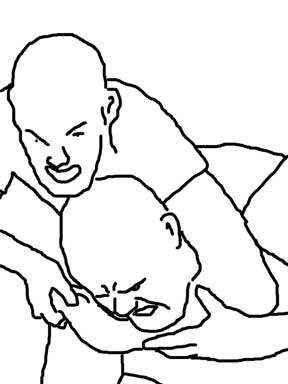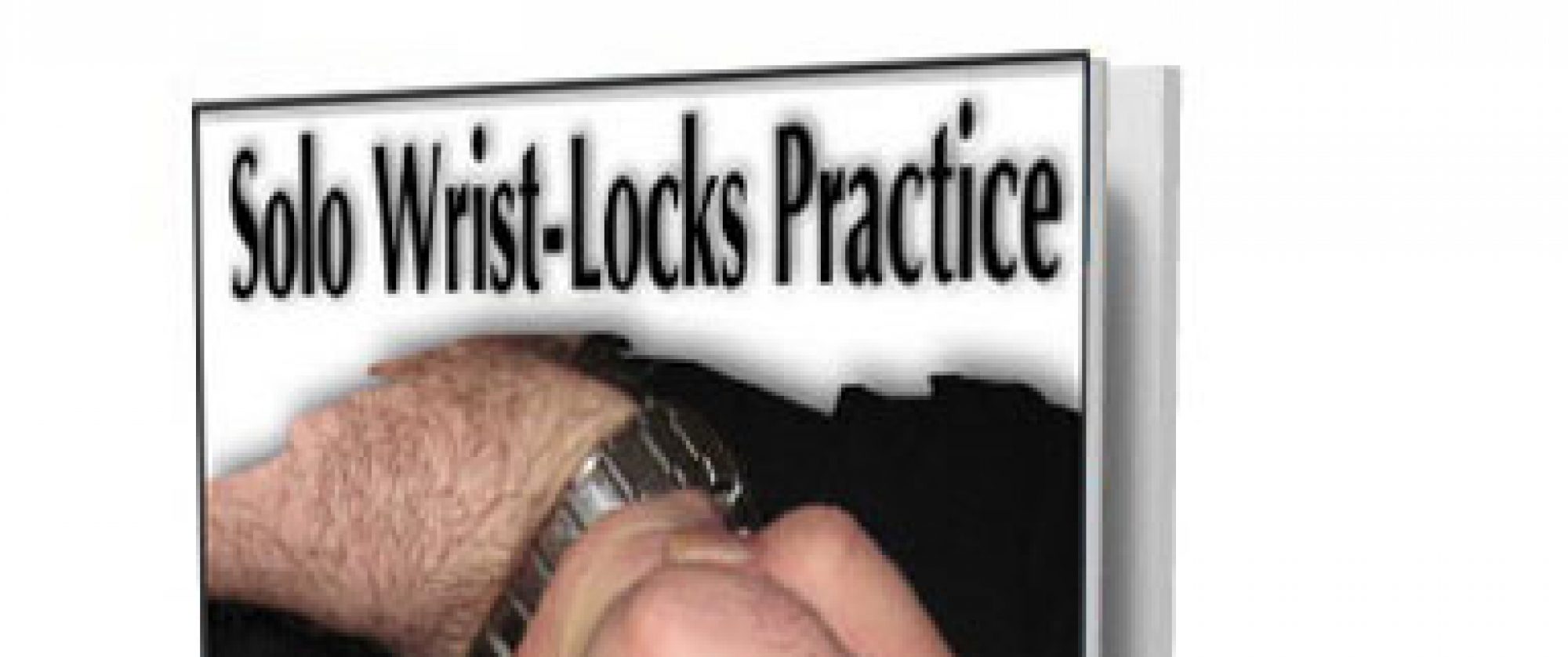Turn the following advice into a practical martial-arts exercise. Practice this, and you’ll react quickly in a real self-defense emergency.
[headline_tahoma_medium_left color=”#000000″]First, Control with a Hold[/headline_tahoma_medium_left]
 In the first part of this exercise, you are going to grab onto your opponent (practice partner). Don’t simply reach out and grasp an extended arm … make yours a controlling grab, maybe a choke from behind with your forearm across your partner’s neck. Or maybe you have him (or her) in a headlock, to the side. Or possible, you have his arm wrenched behind his back.
In the first part of this exercise, you are going to grab onto your opponent (practice partner). Don’t simply reach out and grasp an extended arm … make yours a controlling grab, maybe a choke from behind with your forearm across your partner’s neck. Or maybe you have him (or her) in a headlock, to the side. Or possible, you have his arm wrenched behind his back.
So, start with some hold.
[headline_tahoma_medium_left color=”#000000″]Your Opponent Tries to Escape[/headline_tahoma_medium_left]
In stage two of this exercise, your partner grabs your restraining arm and tries to pull it off of him — he attempts to pull the forearm away from the neck, or to push your headlock arm forward, in order to slip his head out.
There are two key components to this part of the exercise:
1) He starts to resist before you have complete control of him with your hold. In other words, he feels the arm start to restrain, so he panics and works at pulling it off.
2) His first response, in this case, is trying to free himself from your hold. He doesn’t think about hitting or kicking first. (We’ll save that for another day.)
[headline_tahoma_medium_left color=”#000000″]Super-Efficient Martial Arts[/headline_tahoma_medium_left]
 The point of this practice session is to develop a very efficient, direct way to respond to any attempt at escaping your grasp.
The point of this practice session is to develop a very efficient, direct way to respond to any attempt at escaping your grasp.
The instant you feel your enemy grab your restraining arm, your other arm or a foot should quickly strike. And I do mean quickly. FAST.
I’d tell you to think, “Stop the resistance!” but you don’t have time for such a complete thought.
The instant you feel a tug, you punch or kick. Make it a quick and solid strike.
In fact, practice from a variety of holds. You’re trying to develop the response that any time someone even starts to try to escape, you pound.
Practice it over and over from as many different ways as you can grab your opponent. Each time, he panics … grabs your arm or hand and … BAM!
[headline_tahoma_medium_left color=”#000000″]Punch Follow-Up[/headline_tahoma_medium_left]
What do you do after this speed hit?
The choice is yours:
Regrab the same way as before. If you took the fight out of your enemy with that one hit, then reapply your hold.
Continue hitting and kicking. If your initial hit did NOT do the trick, then you may have to knock the fight out of your enemy. Legal ramifications of pommeling someone you are restraining considered.
My favorite response (when it happens naturally) is to take that initial hit, reapply the hold, and then grab a limb for an arm bar or wrist lock. As I lock, I choose whether to keep both the hold and the lock, or to release the hold in favor of a more controlling joint lock.
The key to this practice drill is to work toward automaticity. You want a fast response … I need to emphasize that repeatedly with some students. It’s important.
If someone tries to escape your hold, then you have to regain any control lost, A.S.A.P.
